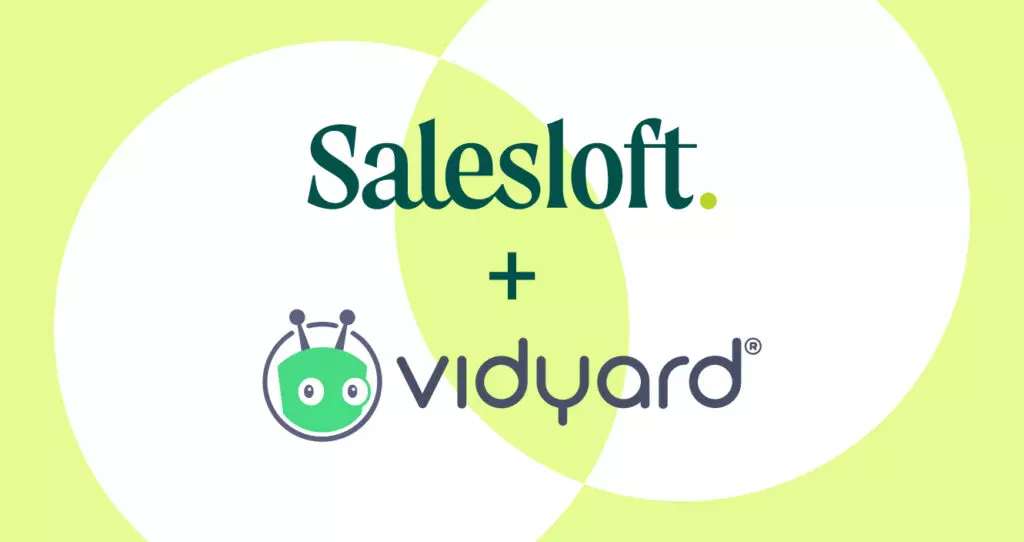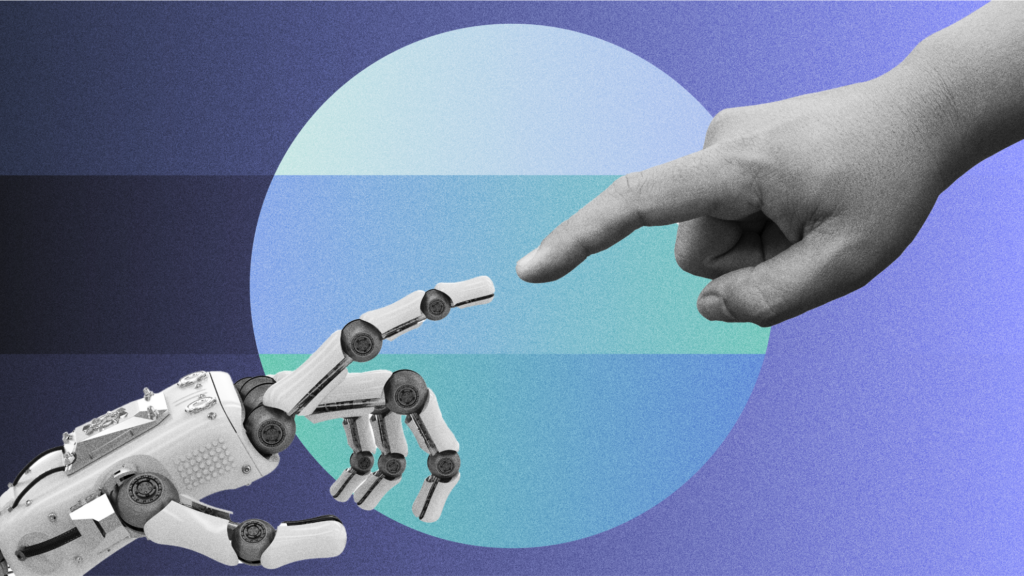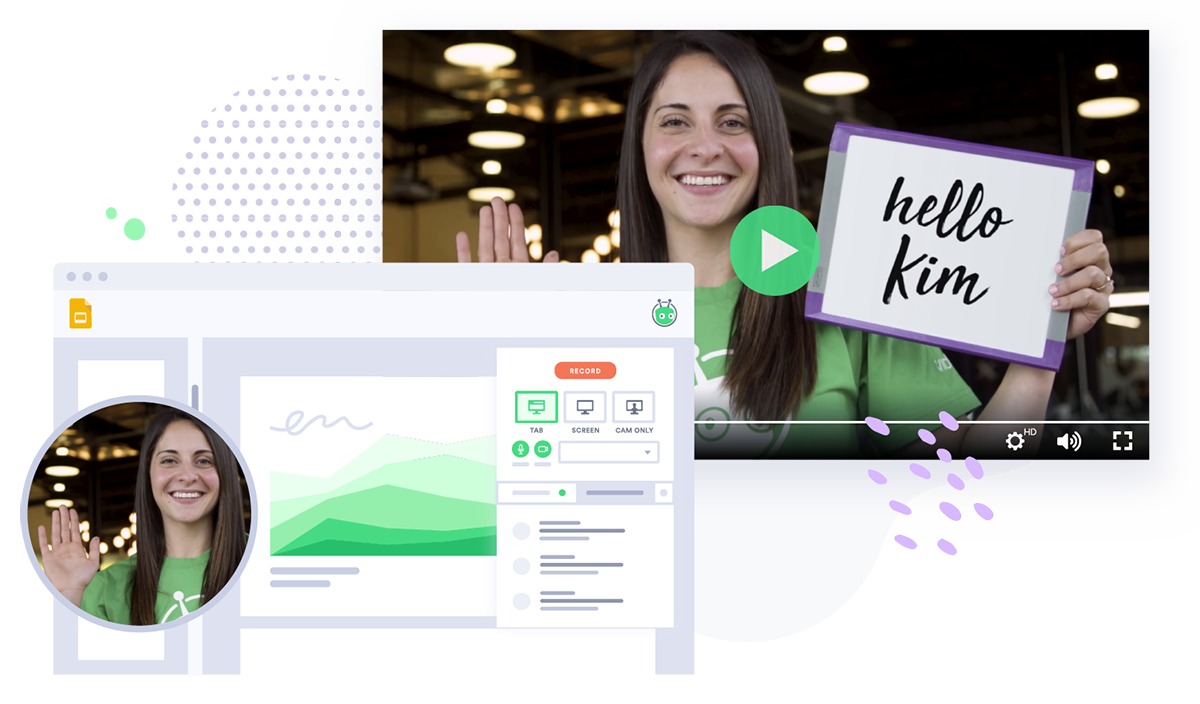AI SDRs: Revolutionize GTM workflows with scalable personalization
February 26, 2025·13 min read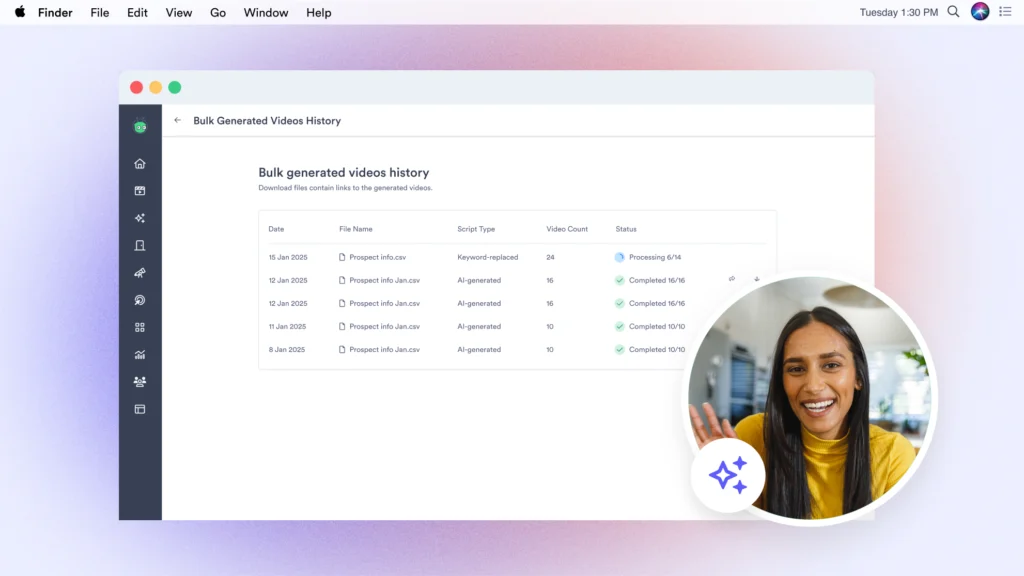
AI SDRs automate sales tasks and enhance personalization in concert with video messaging. See implementation best practices, real success stories, and how AI is transforming sales development.
AI is transforming the sales process, from lead routing and data analysis to far beyond. One of the most exciting tools in this realm is the AI SDR, a sales agent that enables teams to scale lead generation and qualification.
A specific type of AI sales agent, AI SDRs are a new AI-powered technology that enables sales teams to scale lead generation and qualification.
But how do they actually work? What are the pros and cons? Where do AI SDRs shine, and where do human SDRs excel? And how can sales leaders ensure this technology benefits buyers just as much as internal sales teams?
We’ll explore the answer to all of these questions, plus demonstrate how you can easily implement AI SDRs into your current sales processes.
- Contents
- How do AI SDRs work?
- Advantages of adopting AI SDRs
- Benefits of implementing AI SDRs in the sales process
- The AI SDR force multiplier: combine it with video
- Best practices for combining AI SDRs with video
- Challenges and considerations when deploying AI SDRs
- AI SDR tool case study: Vidyard
- The future for AI SDRs, video selling, and sales development
How do AI SDRs work?
AI SDRs automate routine tasks within the sales cycle. They can automatically identify potential prospects, draft cold emails, and send personalized video messages, freeing up sales reps to focus on building relationships and closing deals.
A fully automated AI SDR is your outreach technology and trigger-based workflow that, regardless of the time of day, connects personally with your audience, requiring zero human interaction in order to do its job. It’s like putting your sales process on autopilot.
In contrast, AI-powered or AI-augmented SDRs are like a copilot that helps reps with their daily tasks.
Which one is better? We’re big believers that technology should 10x a person’s abilities versus completely replacing them, especially in the relationship-based world of sales.
Almost any sales team, regardless of size or scope, can get value from AI SDR technology. With two-thirds of reps unable to hit their quota, uplifting performance outcomes is absolutely critical for driving sustainable revenue growth.
Here are just a few parts of the sales process that AI SDRs can automate:
- Cold email outreach
- Personalized video creation using AI avatars
- Ideal customer profile (ICP) identification
- Lead segmentation
- Lead qualification/lead scoring
- Lead routing
- CRM updates
- Intent signal identification
- Inbound lead response
- Meeting scheduling
Advantages of adopting AI SDRs
AI SDRs aren’t the end-all solution to your outbound selling. As mentioned above, they are best used as an enhancement to 10x your existing team and processes. While one of the top advantages of using an AI SDR is that it’s “always-on” to engage your prospects, there are still cases where a more human touch is preferable.
Advantages of AI SDRs:
- Capture more data from calls and emails
- Engage the audience the moment they interact
- Ignite more conversations, driving more pipeline
- Deliver consistent, high-impact outreach
- Automatically send relevant and action-based personalized content created by AI
- Ensure your sales tools are updated with accurate customer data
- Data-driven analysis of what’s working (subject lines, cold email content, sales plays, and beyond)
- Automate response times to qualify prospects and schedule meetings
- Reduce burnout from SDRs having to do so many time-consuming tasks
- Reduce sales prospecting costs by automating tasks
Advantages of human SDRs and other sellers:
- Respond to more complex or nuanced customer questions
- Gauge emotions and accurately respond based on semantic context
- Have customer conversations based on historical context
- Build lasting customer relationships, both online and in-person
So while AI SDRs provide leverage, it’s pretty clear where humans succeed over technology. Sales has always been about relationship building. The personal human touch that can make or break a deal. By implementing AI SDRs, your team can focus on the most crucial part of the sales funnel while being sure that the funnel remains strong, and that customers are personally engaged at the moment they interact.
Benefits of implementing AI SDRs in the sales process
We’ve talked about the advantages of AI SDRs. But what about the overall benefits?
- Automation and scaling of prospecting efforts: From automatically identifying potential prospects that align with your ICP to drafting initial cold emails, AI SDRs can put the entire outreach process on autopilot. By replicating the efforts of the top percentage of a team’s performers, an AI SDR can help make sure that the perfect message is sent at the perfect time, every time.
- Enhanced lead prioritization and qualification: When someone fills out a form on your site or connects with your team at an event, what happens? With a few rules in place, AI SDRs can automatically detect qualified leads, route them to the right team member, speed up follow-ups, and help them prioritize the most important leads.
- Improved personalization through video outreach: Personalization matters more than ever—and video content can help you stand out and build relationships. Automatically sending personalized videos using AI avatars is a great way to build this at scale.
- Streamlined sales processes with AI-driven tools: Even if you don’t use full-on AI SDRs, AI sales tools can help enhance your existing processes while you dip your toe into these next-gen tools.
Whether you use AI SDRs or AI-powered SDRs to help with cold email outreach, ICP identification, lead qualification and lead scoring, or personalized video messaging, it’s all about ensuring you’re using this technology in thoughtful and creative ways that build trust with your team, prospects, and customers.
Overall, the benefits of AI SDRs are all about eliminating the repetitive, manual, and (as many reps would describe) annoying tasks involved in the sales process. While there are dozens of AI SDRs specializing in different processes within the SDR role, one new frontier that high-performing sales teams are especially excited about is the use of AI with video.
Whether you use AI SDRs or AI-powered SDRs to help with cold email outreach, ICP identification, lead qualification and lead scoring, or personalized video messaging, it’s all about ensuring you’re using this technology in thoughtful and creative ways that build trust with your team, prospects, and customers.
Overall, the benefits of AI SDRs are all about eliminating the repetitive, manual, and (as many reps would describe) annoying tasks involved in the sales process. While there are dozens of AI SDRs specializing in different processes within the SDR role, one new frontier that high-performing sales teams are especially excited about is the use of AI with video.
The AI SDR force multiplier: combine it with video
AI SDRs are a powerful tool on their own, but combining them with AI-powered video takes their effectiveness to the next level. Personalized video messages, sent at scale, can significantly increase engagement, buyer trust, and sales velocity.
Here are three ways that AI video enhances the effectiveness of your AI SDR:
- Automate video creation and distribution: Your team no longer needs to manually write scripts or record videos. An AI SDR can automatically generate and send personalized videos in response to buyers’ actions.
- Personalized outreach at scale: Batch-generate hundreds of personalized videos in minutes to cover entire lead lists.
- Analyze video performance: Explore analytics data on video engagement to see which messages and approaches resonate best with buyers.
Best practices for combining AI SDRs with video
When we launched our Video Sales Agent, a tool that automatically generates and sends personalized AI videos triggered by buyers’ actions, we unlocked a powerful fusion of AI technology and sales outreach.
Video Sales Agent supports sales teams throughout the entire sales cycle, from the first touchpoint with a prospect to closing deals and retaining customers. By automating personalized video outreach at every stage, Video Sales Agent ensures consistent engagement and drives better results.
Here are our insights into best practices for leveraging AI SDRs like Video Sales Agent throughout the sales process:
1. Use video to capture attention and drive more responses
In a world where inboxes are overflowing, cutting through the noise is more challenging than ever. It’s no longer enough to simply send a generic email and hope for the best.
An AI SDR automatically creates and sends one-to-one videos that capture attention, drive higher response rates, and make outreach more engaging. This helps reps stand out and start meaningful conversations with prospects. It’s about creating a memorable and engaging experience that sets the stage for a successful sales journey.
As video helps streamline the sales process and improve buyer engagement in outbound sales, this strategy is especially useful for building rapport with new stakeholders and re-engaging prospects who have stopped responding. Our data shows that video messaging has a huge impact on conversion rates, such as turning 4x more opens into meetings.
With a tool like Vidyard’s video AI SDR, your team can set up action-based campaigns that automatically create and send personalized videos based on actions like requesting a demo, downloading a white paper, or even post-close during customer success handoff.
2. Use video to automatically nurture leads and maintain consistent engagement
Attracting buyers is a great start, but the real challenge lies in keeping them moving through the sales funnel.
Your buyers expect personalized experiences that cater to their individual needs and preferences. AI SDRs can automatically ensure that every interaction is timely, relevant, and impactful.
Your buyer attends a webinar. Instead of a generic follow-up email, they’re automatically sent a personalized AI-generated video that summarizes key takeaways and invites them to book a demo.
You can also add a call to action right to the video in order to drive to a piece of content or schedule another call.
This personalized approach keeps leads engaged and nurtured, ensuring that no opportunity falls through the cracks. It also demonstrates your commitment to providing value and building relationships.
3. Increase meeting attendance and drive more conversions
Forget chasing down prospects and stressing about no-shows. These days, time is of the essence, and every interaction counts. AI-powered video helps you make sure that meetings aren’t just booked—they’re actually attended.
A buyer books a demo. Instead of a generic confirmation email, they automatically receive a personalized AI-generated video from the Account Executive. This video introduces the AE, sets expectations, and builds excitement for the meeting.
A day before the demo, the buyer automatically receives an AI-generated video reminder. This helps keep the meeting top-of-mind, reducing the chance of a no-show.
This personalized touch can make all the difference. It shows prospects that you value their time and are invested in their success. It also helps build rapport and establish a connection before the meeting even begins.
This approach is helpful after a call, too. An AI SDR can automatically create a personalized follow-up video after a meeting, reinforcing key takeaways and addressing outstanding questions or concerns. This helps keep the conversation going to ensure that buyers stay engaged throughout the sales process.
4. Cultivate lasting buyer relationships
The journey doesn’t end when a deal is closed. In fact, that’s just the beginning!
As far as buyers are concerned, the ideal experience goes far beyond the transaction. A post-sales team can use AI video to keep in personalized contact with the customer. This helps foster a sense of loyalty and advocacy that drives long-term growth.
A customer just completed their onboarding process. Instead of a generic welcome email, they automatically receive a personalized AI-generated video from their Account Manager, congratulating them and offering helpful tips for success.
A month later, the customer receives another AI video, this time highlighting new features and best practices tailored to their unique usage patterns.
When the customer hits specific milestones, they receive yet another personalized AI video acknowledging their achievement and expressing appreciation for their business.
This proactive, personalized approach keeps customers engaged and informed. It reinforces the value they perceive from your relationship and strengthens their connection with your brand.
An approach like this also helps address potential churn. By identifying at-risk customers, you can trigger personalized AI videos that offer support, address concerns, and showcase the value they’re receiving.
By automating personalized video touchpoints like these throughout the customer lifecycle, AI SDRs can help you build stronger relationships, increase customer satisfaction, and drive long-term loyalty.
Challenges and considerations when deploying AI SDRs
You may have seen a horror story or two on LinkedIn about poor implementations of AI SDRs.
So as your team looks to put an AI SDR to work, make sure you think about these factors:
1. Test drive the technology
As a GTM or sales team, you know all too well that other sales teams (not yours, of course) can overpromise and underdeliver. This is why we highly recommend really putting the technology through its paces during a trial period. A thorough test before signing the full deal can help you make sure that the tool can actually deliver the functionality it promises.
2. Ensure adoption
We’ve all seen a team buy a shiny new sales tool, only for it never to get integrated into the team’s workflow. It sits there, unused, until renewal time—or until Finance starts asking about its ROI.
Make sure you have a strategy to test, measure, and scale usage to your whole team. Think about starting two or three reps with a new AI tool, or limit deployment of a fully AI SDR to a single instance. Analyze initial performance and learn how to work through issues so you can smooth the path for the rest of the team.
3. Address learning curves
As you look to bring the tech to your entire team, ensure everyone receives the proper training and support. Often, AI technology is brand new, meaning that you can’t just rely on playbooks, FAQs, or social media discussions. Think about having a leader take on training, or bring in an outside expert to help your team utilize and integrate the new tool throughout the sales process.
4. Confront resistance
Even if you’ve provided ample learning, your team might still be resistant. Just like with your customers, you need to build trust with your team that the technology is worth adding to the tech stack—and that they can expect great results (like fewer manual tasks, less note-taking, or greater deal acceleration). The best way to conquer resistance is to show results!
When it comes to video AI SDRs, there can be friction, especially if your team isn’t already using video in its day-to-day process. Here are a few resources to help you get started with using video in sales:
AI SDR tool case study: Vidyard
Vidyard is an AI-powered video selling platform that offers video-focused AI SDRs. Here’s a quick rundown of how it works.
AI Avatars: Personalized, scalable video
Your reps can create their own AI Avatars based on their likenesses. Each rep can use their Avatar to generate full videos using just a written script. Best of all, these videos can be fully personalized using in-script tokens. Generative AI-powered video effortlessly scales up the one-to-one communications that are critical to closing deals.
Video Sales Agent: Video made automatic
Vidyard’s Video Sales Agent is an always-on agentic AI tool that automates the video selling process. After a one-time workflow setup, the tool automatically generates and sends personalized videos using your reps’ AI Avatars. It’s triggered by specific buyer actions, like downloading a marketing asset or booking a demo.
The tool engages every buyer with the right message at the right time. It also automates time-consuming sales tasks, so reps can focus on high-value conversations.
Real-world AI SDR success stories
We’re always surprised by how creative Vidyard’s customers are when it comes to utilizing video throughout the sales process. When we released our newest technology including AI Avatars and AI-crafted scripts, they really took it to the next level.
ReviewThatPlace.com
ReviewThatPlace.com, a digital solutions company needing to expand its client base, struggled to stand out and capture attention with project pitches they were sending to prospective clients.
Shakir, their CEO, also leads their outbound sales. While he was already sending manually created videos, he says: “There’s zero chance for me to be able to submit 50 pitches a day if I’m recording all those by myself.”
When Shakir switched over to AI-generated videos with the help of AI Avatars, he saw a staggering 760% increase in proposal views, as well as a 4x increase in his opens-to-meetings rate.
Read Shakir’s full success story here.
Vidyard’s Sales Team
We know how powerful video messaging for salespeople can be. So when we released AI Avatars, Vidyard’s own sales team was the very first customer.
The team was soon creating videos at a far higher rate than ever before. One AE generated 700 personalized videos in the span of a week. On the whole, the team is spending more of its time and energy on cultivating buyer relationships.
Read the Vidyard sales team’s full success story here.
The future for AI SDRs, video selling, and sales development
From AI agents helping teams reduce manual and repetitive tasks to AI avatars making personalized video messaging scalable, the future of AI in sales is becoming clear: It’s all about enabling every sales rep to function at their best.
Here are three ways that we expect AI SDRs, video selling, and sales development to evolve in the B2B GTM space.
1. Shifting buyer preferences
Buyers want simplicity—yet buying committees are becoming more complex than ever before. According to Gartner, buying committees are two to four times larger than just a decade ago, with an average of 11 stakeholders.
Overcoming the hurdles of a large buying committee can be difficult, especially as each individual has their own preferences, goals, and desires. If you’ve deployed an AI SDR, it’s a good idea to regularly re-assess buyer preferences and make tweaks to your automated outreach in order to better suit expectations.
2. Growing adoption of video-first strategies
Every company should be video-first, especially when it comes to building trust with potential and existing customers. The tech, tools, and platforms are finally ready for this leap…but are you?
Going forward, teams will find innovative new ways to reinvent themselves as video-first across all areas of their business—from onboarding new employees to, of course, using personalized video messaging in their sales process.
3. The end of the Sales Development Representative (as we knew it)
AI isn’t the death of the SDR, but it’s certainly a reinvention of the role.
Sales Development Reps are usually entry-level team members that focus on generating prospect lists, cold outreach, and booking meetings. AI SDRs and other AI sales agents can handle many of these tasks more efficiently and effectively.
So where does that leave SDRs? The best SDRs are already focused on optimizing their sales process. This role will likely become far more data-driven and more focused on building trust. Its new job description will be to ensure that AEs have exactly what they need to close more deals, faster.
Sales leaders will also need to reassess how they’re evaluating key performance metrics and the success of their SDRs in this new age of AI.
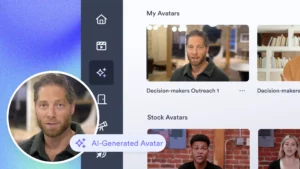
 Create your own true-to-you AI avatar, then generate full videos with just an AI prompt. Learn More
Create your own true-to-you AI avatar, then generate full videos with just an AI prompt. Learn More 

